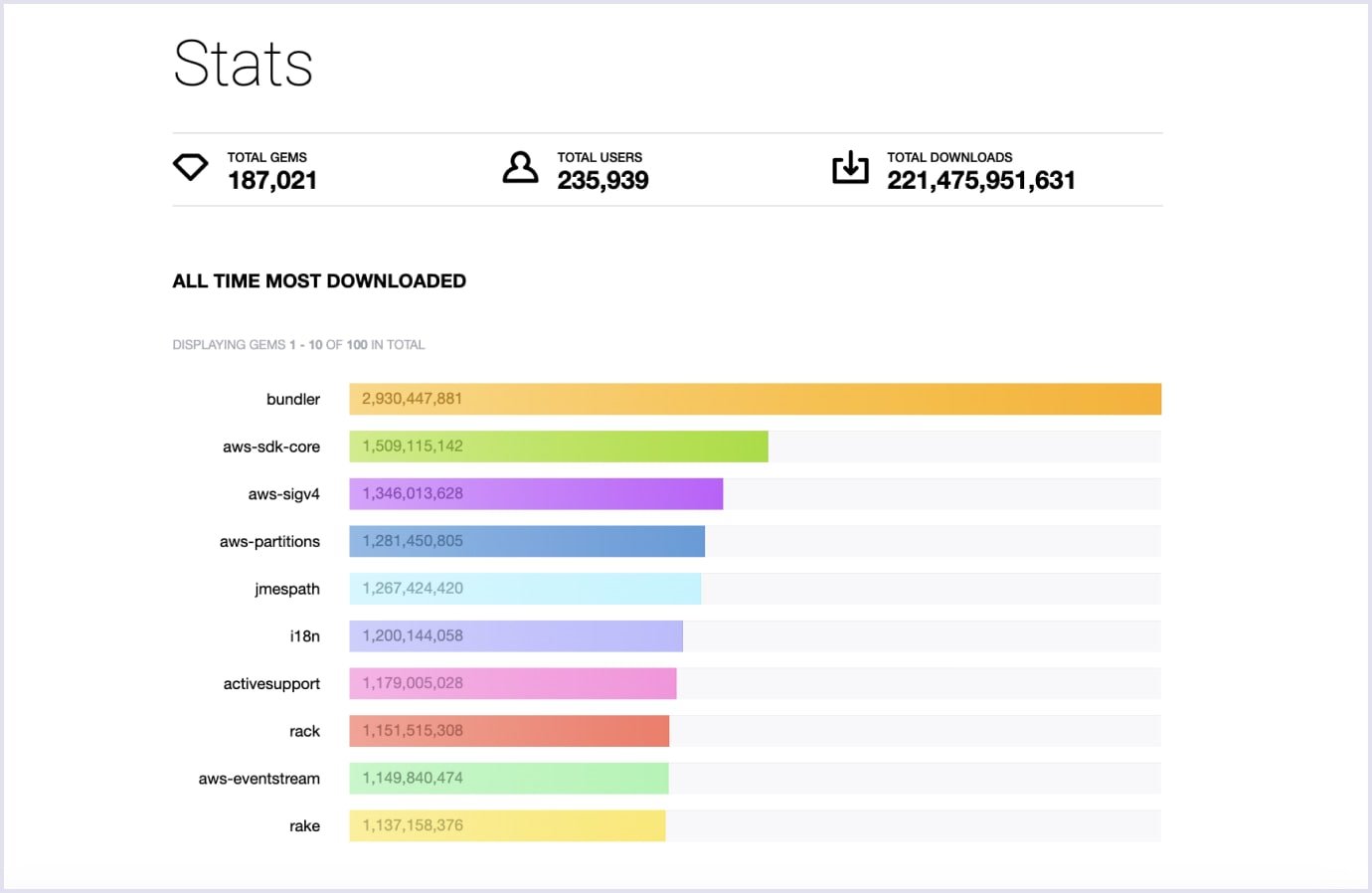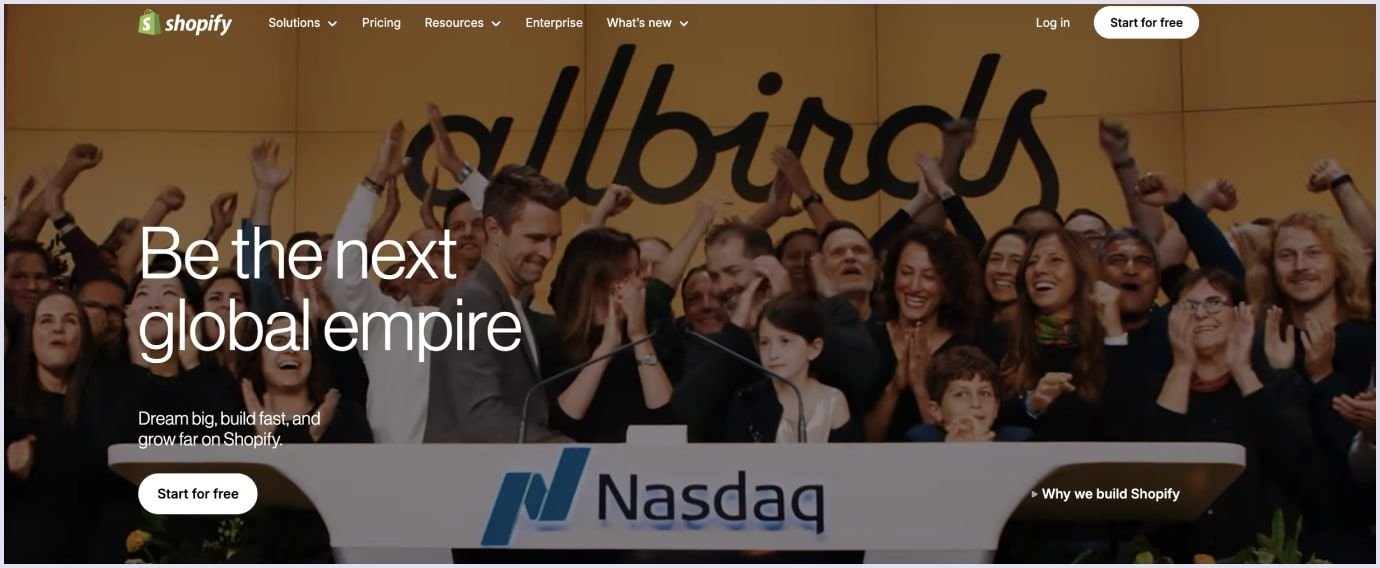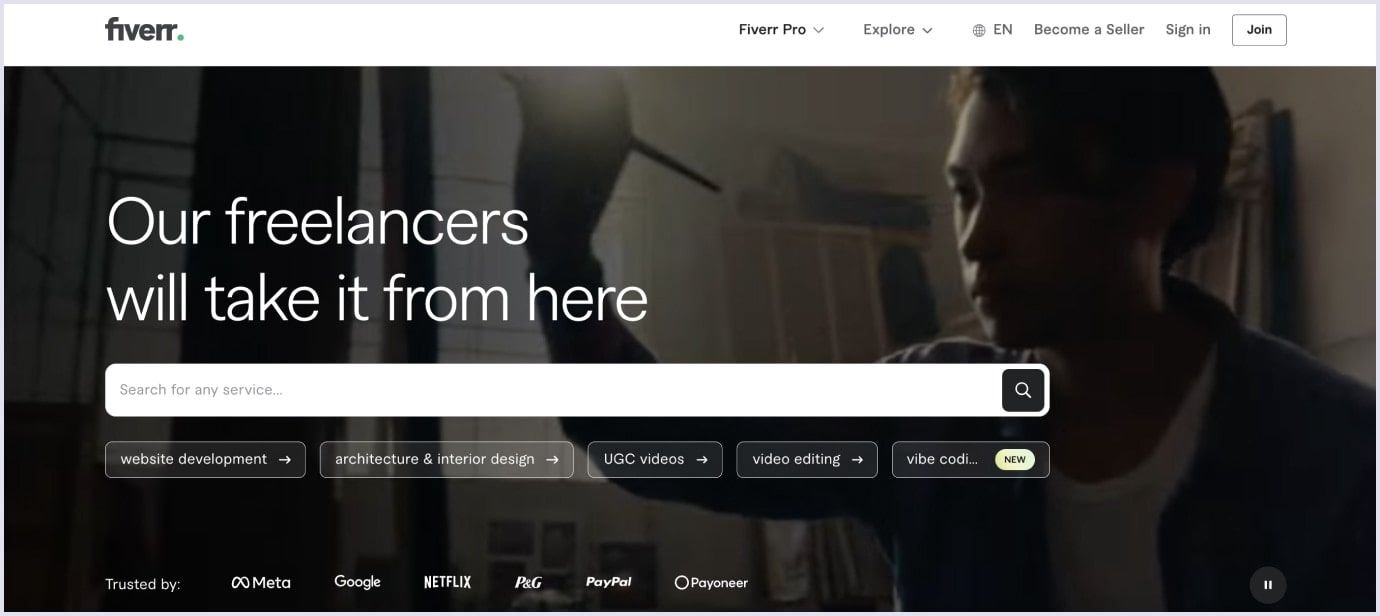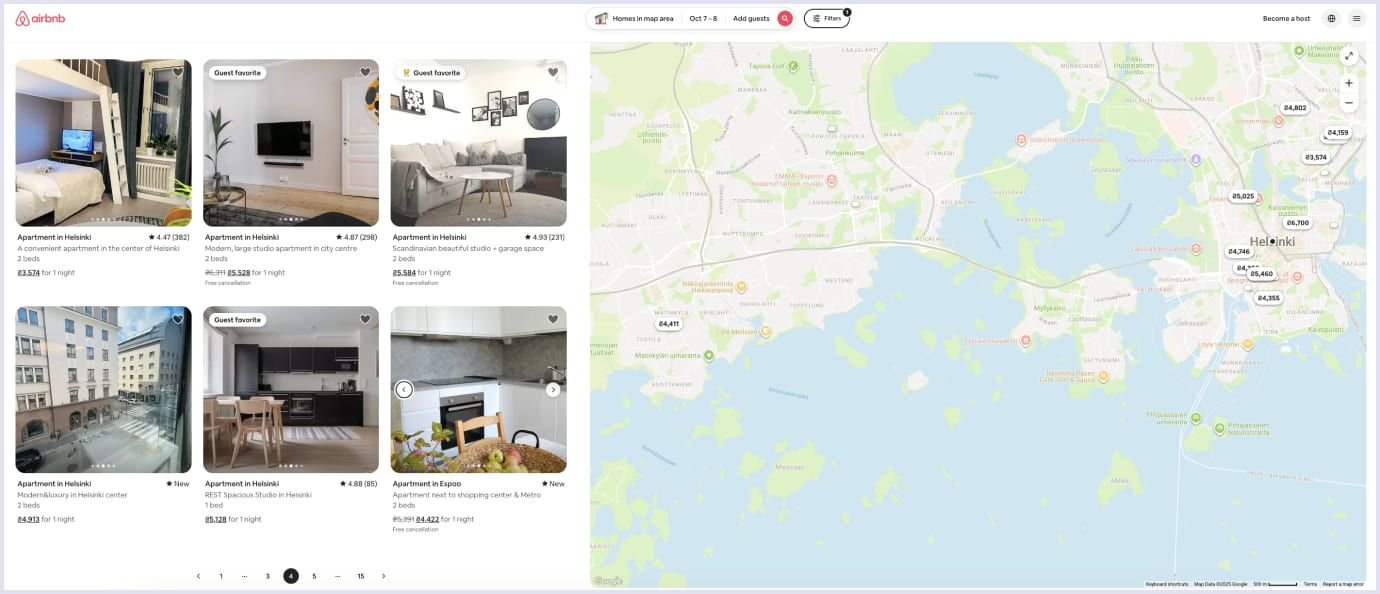The last several decades have been marked by the rise of different marketplaces. Airbnb, Fiverr, Etsy, and Groupon are on everyone’s lips. That's not surprising that the idea of launching a second Amazon or eBay seems so appealing.
To win the ecommerce race, entrepreneurs focus on providing an excellent customer experience and building fast-loading and scalable websites. Besides, business owners take various security measures to protect their customers’ sensitive information. This way, they can gain clients’ trust and boost sales.
When building a custom marketplace, what technology stack is best to achieve all these goals? Our answer is simple: Ruby on Rails (RoR).
In this article, we will fill you in on the Ruby on Rails marketplace development. At Codica, we are passionate fans of this framework and have built marketplace websites with its help. Learn about the key advantages of RoR for building a marketplace, and you’ll understand why thriving marketplace companies choose this framework. Let’s get into it.
About Ruby on Rails
Ruby on Rails (RoR) is one of the most widely used web development frameworks, created in 2004 by David Heinemeier Hansson (DHH). Built on the Ruby programming language, it was designed to speed up web application development with clean syntax and ready-to-use solutions.
The framework is based on key principles:
- DRY (Don’t Repeat Yourself): minimize code duplication.
- Convention over Configuration: follow smart defaults instead of complex setups.
- Clean architecture: keep business logic in models and controllers lightweight.
Today, Ruby on Rails powers over 1 million websites worldwide. Its rich ecosystem includes hundreds of thousands of gems, reusable libraries that add features like payments, analytics, authentication, and more without building from scratch.
Global platforms such as Shopify, Airbnb, Fiverr, GitHub, and Couchsurfing were built with Ruby on Rails. These examples prove that RoR works equally well for launching MVPs and for scaling global marketplaces with millions of users.
Its core strengths, fast online marketplace development, built-in security, and scalability, make Ruby on Rails the perfect choice for building modern online marketplaces.
When you should opt for Ruby on Rails marketplace development
Ruby on Rails has a number of benefits that enhance your marketplace’s performance, usability, and security. So, we recommend you use this framework in the following cases.
1. You want to cut development time
Ruby on Rails can reduce marketplace development time by 25-50% compared to other well-known frameworks, which is considerable for startups. That’s all thanks to a lean code base, modular design, and object orientation of Ruby programming language.
Another reason to use the services of a Ruby on Rails development company is the great number of Ruby gems. These free, open-source libraries offer particular functionality. So, if you want to add a specific marketplace feature, your development team will not have to write it from scratch. All it takes is to use a particular gem. As a result, Ruby on Rails marketplace development time is reduced dramatically.
Let’s take a look at the total number of Ruby gems and their downloads:

Source: RubyGems
For any must-have functionality of your ecommerce platform, you can find the following useful gems.
Payment gateways:
- stripe: integration with the Stripe payment platform.
- activemerchant: payment abstraction library supporting multiple gateways.
Shipping:
- easypost: multi-carrier shipping API for carrier communication.
Financial management:
- money-rails: handling money and currency conversion.
Product management:
- friendly_id: readable URLs for products.
- ancestry: managing tree-like structures for product categories.
Analytics and reporting:
- ahoy_matey: tracking visits and events for analytics.
Search and filtering:
- elastic-enterprise-search: advanced search capabilities.
- has_scope: simplifying filtering based on resource scopes.
Order management:
- aasm: adding state machines for order states.
As you can see, there are many ready solutions that can speed up launching your ecommerce website. Of course, an experienced Ruby on Rails development company knows them all and will recommend the best options for your particular project.

2. Security of payment information is your top priority
Global ecommerce sales are projected to exceed $7.9 trillion by 2027, and with that growth comes increased attention from cybercriminals. Online marketplaces often become the first targets because they process large volumes of sensitive payment data. A single vulnerability can result in financial losses and, even worse, a loss of customer trust.
Among the most common threats are: malware attacks, card-not-present fraud, e-skimming at checkout, and large-scale data breaches. These incidents don’t just damage revenue, they can permanently harm a brand’s reputation.
Ruby on Rails helps prevent such risks thanks to its built-in security measures. By default, the framework protects applications from SQL Injection, Cross-Site Scripting (XSS), and Cross-Site Request Forgery (CSRF). Combined with PCI DSS-compliant payment integrations, this makes RoR a strong foundation for safe and trustworthy marketplaces.
3. You search for efficient ways to reduce expenses
The launch of an online marketplace can be an expensive project. This forces business owners to seek ways to keep marketplace development costs down. Luckily, with Ruby on Rails marketplace development, you can reduce expenses.
For starters, RoR is an open-source framework, which means it is totally free. Also, it is compatible with many free databases and servers.
In addition to free gems, RoR developers can use a wide variety of free library extensions and utility classes.
Finally, this technology makes rapid prototyping possible. It means you can launch a minimum viable product for your ecommerce solution within a short time period. You can quickly show your marketplace MVP to investors and potential users to get valuable feedback. After that, the Ruby on Rails development company you partner with will know what should be added/modified/removed from your website.
An MVP can help you reduce the final cost of online and multi-vendor marketplace development services. For example, when building a minimum viable product, developers do not have to implement all the functionality. Therefore, your Ruby on Rails development company will need less time to complete the project. As a result, their services will be less expensive.
Read also: B2B Marketplace: Definition, Features, and Development Guide
4. You consider the potential growth of your marketplace
Every successful marketplace eventually faces the challenge of scale. As traffic grows, your platform must handle thousands of simultaneous transactions and searches without slowing down. Preparing for this growth early is essential if you want to deliver a seamless experience to users.
Here Ruby on Rails proves its strength. The framework is behind some of the world’s fastest-growing platforms:
- Shopify now powers over 4.82 million online stores and processes billions in transactions annually.
- GitHub, also built with RoR, supports 100+ million developers and more than 420 million repositories.
- Airbnb hosts over 7 million listings in 220+ countries, handling millions of requests daily. These numbers show that Ruby on Rails is not just for startups, it’s a framework trusted by global leaders to scale their platforms to millions of users.
Of course, scalability doesn’t depend on the framework alone: server infrastructure, database design, and deployment strategy all play a vital role. But with Ruby on Rails at the core, your marketplace is prepared for sustainable growth.
Further reading: Top Online Marketplace Trends to Watch Out for in 2025
5. You want to attract talented developers to your project
What is the key to the successful launch of a marketplace website? To a great extent, it is the IT vendor's experience and proficiency. If you are looking for talented and skilled specialists, think of turning to a Ruby on Rails development company. Thus, you will get a fast, scalable, and secure ecommerce platform.
What makes RoR developers such great specialists? In truth, Ruby is not the easiest programming language to learn. Therefore, developers need to master other web technologies first, such as HTML, CSS, JavaScript, SQL, HTTP, and REST paradigms. After that, developers can proceed to learn Ruby and Ruby on Rails to reveal their full potential.
Programming experience alone is not enough for Ruby on Rails marketplace development. Building an ecommerce project that will stand out from competitors and bring unique value to consumers requires dedication and passion for work. These qualities distinguish RoR developers from other coders. Their passion and dedication help create top-notch online and multi-vendor marketplace solutions. So, their customers are satisfied with excellent Ruby on Rails development services.

Best examples of Ruby on Rails marketplaces
Now, let’s examine the most famous marketplaces built on Ruby on Rails. Their success stories will show you why it is a good idea to partner with a Ruby on Rails development company to build your ecommerce marketplace platform.
Shopify
Shopify is one of the most successful examples of a marketplace and commerce platform built with Ruby on Rails.
What began as a small online snowboard store in 2004 has grown into the world’s leading commerce solution, empowering millions of merchants worldwide. Today, businesses of every size, from solo entrepreneurs to global enterprises like Gymshark and Mattel, use Shopify to sell online, in person, and across multiple channels.

Source: Shopify
The platform offers everything needed to start, run, and scale a marketplace: an intuitive online store editor, customizable themes, built-in SEO tools, international selling features, and the world’s best-converting checkout, which converts on average 15% higher than other platforms. Shopify also provides robust solutions for payments, shipping, B2B sales, analytics, and marketing, supported by an ecosystem of over 13,000 apps.
Thanks to its Ruby on Rails foundation, Shopify delivers speed, scalability, and security at a global level. The platform has already processed over $1 trillion in sales, proving that RoR can power high-growth, high-traffic marketplaces. For entrepreneurs aiming to build a marketplace that can grow into a global brand, Shopify is the ultimate proof of what Ruby on Rails can achieve.

Fiverr
Fiverr is a global freelance services marketplace built with Ruby on Rails, connecting businesses with skilled professionals across more than 700 categories.
From web development and SEO to video editing, AI services, and design, Fiverr makes it simple for entrepreneurs and enterprises to find the right talent and get projects delivered quickly.

Source: Fiverr
Trusted by leading brands such as Google, Meta, Netflix, and PayPal, Fiverr has become the go-to platform for outsourcing creative and technical work. Its strengths lie in an intuitive buying process, transparent pricing, and flexible payment models, whether one-time projects or long-term collaborations.
For businesses, Fiverr Pro offers premium vetted experts, while tools like Fiverr Business streamline team management and project coordination.
Powered by Ruby on Rails, Fiverr is able to deliver a fast, secure, and scalable experience to millions of users worldwide. It stands as proof that RoR is not only ideal for building multi-vendor marketplaces but also for creating platforms where trust, speed, and global reach are essential.
Airbnb
Airbnb is one of the most iconic peer-to-peer marketplaces built with Ruby on Rails.
Founded in 2008, it transformed the way people travel by connecting hosts offering unique accommodations with guests seeking authentic experiences.
Today, Airbnb operates in 220+ countries and regions, listing more than 7 million properties, from city apartments to rural cabins and luxury villas.

Source: Airbnb
The platform has welcomed over 1.5 billion guests and continues to expand its services beyond stays, offering experiences and long-term rentals. With a seamless booking process, secure payments, and global reach, Airbnb has set a new standard for online hospitality marketplaces.
Ruby on Rails played a key role in Airbnb’s rapid growth. The framework enabled the team to launch their MVP quickly, reduce development costs, and scale to meet massive global demand. Its built-in security and flexibility allowed Airbnb to build trust with both hosts and travelers, proving that RoR is a reliable foundation for large-scale, high-traffic marketplaces.
The secure path to growth
The success stories of Shopify, Airbnb, and Fiverr prove how powerful Ruby on Rails marketplace development is for building scalable, secure, and cost-efficient platforms.
By combining rapid development, lower expenses, and built-in security, Ruby on Rails gives entrepreneurs the perfect foundation to launch and grow successful multi-vendor marketplaces and custom ecommerce platforms. With its rich ecosystem of gems and strong developer community, your marketplace will always stay future-ready.
If you want your marketplace to scale like the world’s leading platforms, our expert team at Codica is here to help. Contact us today and let’s turn your marketplace idea into a secure, scalable, and profitable business with Ruby on Rails!
